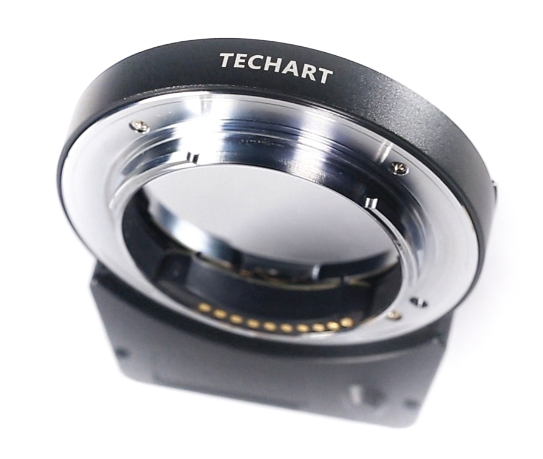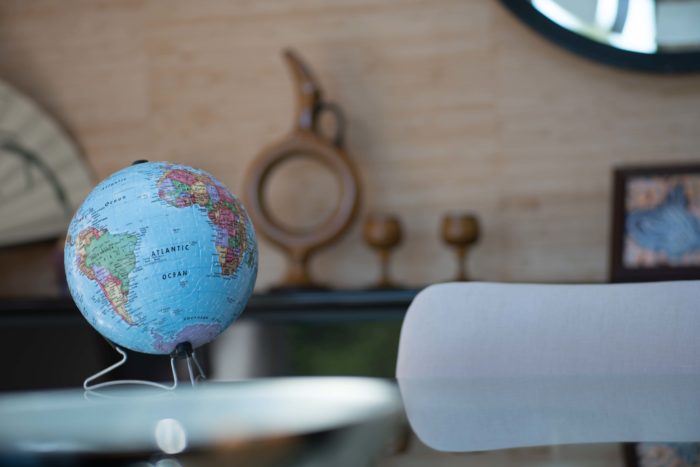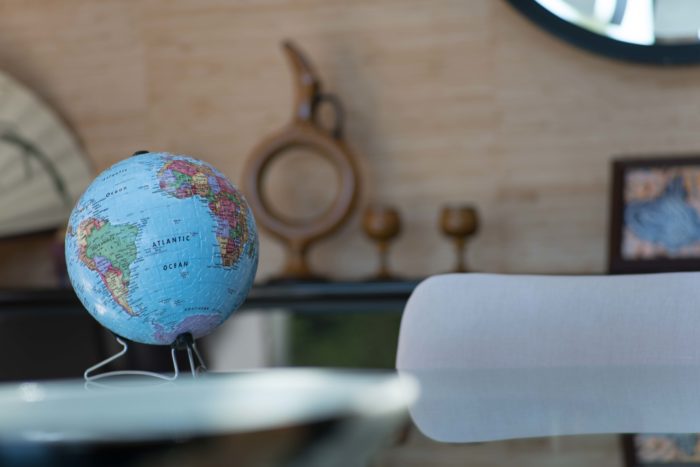TechArt Pro Review by Doug Kaye
[shoplink 48022 ebay] [/shoplink]
[/shoplink]
[shoplink 48022 ebay]Leica M-mount to Sony E-mount Adaptor[/shoplink]
The following review is a guest post from Doug Kaye. To write a guest post follow the instructions on that page. Thanks!
———————-
This post is ostensibly a review of the TechArt Pro Leica M-mount to Sony E-mount lens adaptor, but I’ll start with a bit of the story as to how I came to be interested in such a device.
During the first year of All About the Gear I reviewed the Leica M 240 camera. I was particularly impressed with those expensive Leica lenses we’ve all heard so much about. I was less impressed with the $7,000+ camera body, which I swore I’d never buy. But those lenses! Sharp, contrasty, small, light…gorgeous.
Two months later, Sony announced the original A7 camera: a full-frame digital with their new lens mount that was previously released for the NEX series of APS-C cameras. The only problem? There were only two full-frame E-mount lenses. To get around that limitation (at least for the A7R) Sony initially included your choice of lens adaptors, for either Nikon or Canon lenses. It’s possible to use these DSLR lenses with a mirrorless body like the A7 because the flange-to-sensor distance in a mirrorless camera is half what it is for a DSLR. All you need to do is insert an extension (adaptor) to hold the lens out about 10mm. The simplest adaptors are nothing more than thick spacers with the proper bayonet mounts on either side.
This proved to be a brilliant strategy for Sony. There’s no way to know for sure, but I doubt the A7 line would have been nearly as successful if (a) the cameras hadn’t been adaptable to legacy lenses, and (b) Sony hadn’t encouraged this in the first year.
I took the bait and bought an original A7 and a US$20 M-mount adaptor. I tried some rental lenses to convince myself this worked, then set out to buy some used Leica M-mount glass. My very first lens, which I still have, is a 55-year old 135mm f/4 Elmar. It cost me only US$300 because the old coatings on the front element render the lens virtually useless when hit by direct light. But this was the first nibble, and I have since acquired a small collection of Leica Summarit-M, Summicron-M, Elmarit-M and Voigtlander lenses.
[Last year I got the idea that since I had these great M-mount lenses, why not get a used Leica body and try shooting film again? I did that for the first half of last year. And then…yes, you saw this coming…later last year I succumbed to the urge and purchased a gorgeous used M-240 digital body. Remember…I’d promised I’d never do that!]
Until I purchased my digital Leica Q nearly a year ago, I frequently shot with this combination of an A7 body and one or two M-mount lenses, particularly the 90mm Elmarit-M f/2.8, a focal length for which I don’t have a similar Sony lens. The only thing I really missed was autofocus for those situations in which my subject was just moving too quickly for me to track with manual focus.
Then early this year, TechArt Pro announced their autofocusing adaptor for M-mount lenses to E-mount bodies. I just had to try it.
The Review
The TechArt Pro adaptor costs US$359 including free shipping, at least to the U.S. Once it arrived, I updated the firmware to version 2.0 using the free iOS app. It connects to the adaptor via Bluetooth without manual pairing and couldn’t be much simpler to use.
TechArt Pro says the adaptor is only supported on bodies for which Sony has “opened” access to phase-detect autofocus (PDAF) to third parties. This includes the full-frame A7SmkII, A7RmkII and APS-C A6300. I tested with the latter two cameras.
How does it work?
You set the lens to focus at infinity. Instead of using the internal focusing of the lens, the adaptor works like a variable extension tube, sliding the whole lens in or out about 4.5mm. Fully extended, most lenses I tested focused down to about 2x their normal closest distance, about 1.5m for the 50mm Summicron-M and 2.0m for the Elmarit-M 90mm. If you want to focus even closer, you can set the lens to something less than infinity, in which case the adaptor brings the closest focus distance down to perhaps 0.5x what the lens normally allows. (This varies lens by lens.)
What cameras are supported?
As I mentioned above, TechArt Pro says their adaptor only works with Sony cameras that have an “open” PDAF, which means the A7RmkII, A7mkII and A6300. I didn’t test it, but the A7SmkII doesn’t have PDAF and therefore isn’t supported, nor are any of the “mark I” bodies.
How fast is it?
It takes about one second to move the lens through the full travel of the adaptor. In good light, if the change in focus is minor it can be quite quick, typically taking less than 1/2 second (my estimate) to lock focus. Heavier lenses seem to take a little longer than lighter ones. The company recommends it for lenses that weigh 300g or less and says the maximum lens weight is 700g.
What autofocus modes are supported?
The adaptor work in both AF-S and AF-C still-image modes. However it doesn’t work in Zone, Expanded Flexible Spot, Lock-on AF, AF-A or DMF modes. (Sony shooters will understand all those acronyms or can figure them out. :-)) AF-C does not work for video.
Although the TechArt Pro website says Face Detection doesn’t work, I had no trouble with it. It worked just as well as when using a native E-mount lens. And Smile Detection for triggering the shutter worked well, too.
What about aperture settings?
Native Sony lenses always autofocus with the aperture wide open, regardless of the f-stop you’ve selected. When you autofocus (eg, when you press the shutter release half way) the camera keeps the lens wide open to give the autofocus and EVF/LCD as much light as possible.
If you have Live View Display set to Setting Effect ON, the camera initially shows you the image with the lens at the f-stop you’ve selected, but opens it fully for just long enough to autofocus. For this reason, you should keep this option set to OFF if you want the fastest possible autofocus. The camera will autofocus first, allowing you to take the picture, but if you keep the shutter-release button held down half way, the camera will then stop the lens down so you can preview the depth-of-field.
The same is true for native lenses on a DSLR. The lens starts wide open, but when you press the shutter release, the camera stops the lens down to the f-stop you’ve selected, makes the exposure, then opens the lens to maximum once again.
When using an M-mount lens via an adaptor, the camera can’t do this. These lenses are fully manual. When you select f/8 on the lens itself, for example, the lens really does stop the lens down, therefore reducing the light available for autofocus and preview. For an f/2.0 lens, that means you’ve got four stops less or 1/16th as much light to work with and it means the autofocus is going to be slower. If you’re shooting in bright light, this isn’t much of a problem, but when shooting in low light and stopping down, I did find the system becomes fairly slow. I could easily get into a situation in which the camera simply gave up trying to focus, whereas if I’d had a native lens that was focusing while wide open, it could have done the job. Bottom line: If you’re shooting at a high ISO or using a slow shutter speed (ie, when not much light is reaching the sensor) don’t expect quick autofocus if at all.
How is it powered?
The adaptor is powered from the camera’s own battery. I haven’t tested to see how long a battery would last, but it didn’t seem to run the charge down any faster than using an autofocus image-stabilized lens.
What do you see through the viewfinder?
The visual experience is pretty much the same as what you get with a native autofocus lens. The in-focus points appear as little squares. The green light in the lower-left corner of the EVF blinks and then locks when the camera thinks focus has been acquired.
One difference, however, is that the adaptor is quite noisy. It would be unsuitable for recording audio using the built-in microphones, for example. As a street photographer, it’s not loud enough to concern me, but it’s something to consider for other applications.
How about image stabilization?
Even using a simple adaptor, the A7mkII and A7RmkII allow you to use their new in-body image stabilization with these manual M-mount (and other) prime lenses. The only limitation is that since the camera body doesn’t know the focal length of the attached lens, you need to go into the menu system to specify that value. (I’ve set the C2 button on my A7RmkII to jump to this menu option.)
How well does it work on the A6300?
Even faster than on the full-frame bodies! This is probably due to the fact that autofocus is generally faster on the A6300, but it’s quite impressive with the TechArt Pro.
Can I still use manual focusing? What about focus zoom and focus peaking?
Because of Sony’s crazy menu logic, you can’t select Manual Focus (MF) using the regular or Fn menus. However, if you program a button (such as the one already labeled AF/MF!) to switch between autofocus and manual focus, that works just fine.
When you switch into manual-focus mode, the adaptor parks itself in the unextended position as you’d expect. And yes, you can use the zoom-in feature for critical focusing. Focus peaking works as well.
What is displayed in the EXIF data?
The adaptor doesn’t read the 6-bit markings from modern Leica lenses, so it has no way of knowing which lens or focal length are in use. Likewise, it has no way of knowing the aperture to which the lens is actually set. Sometimes the EXIF data contains nothing regarding the lens or the current aperture at all. But at other times it writes that the exposure was made at f/2 using a “28-75mm F2.8 SAM” lens. At least that’s what I’ve observed on approximately half the exposures I evaluated. There’s probably a pattern as to when there is or isn’t EXIF data, but I haven’t yet figured out what it is.
How accurate is the autofocus?
The images look every bit as sharp as those I made using the same lenses and focusing manually, which is what you’d expect given that it’s the camera not the adaptor that decides what’s in focus.
Continuous autofocusing (AF-C mode) also worked reasonably well but not at all for video. There’s no way to compare apples to apples on this one, since without the adaptor the M-mount lenses are manual-focus only. The continuous autofocus isn’t as quick to respond as when using any of the native Sony lenses I own, but it’s not too bad either. I was generally impressed with how well it worked for the price I paid.
What about the image quality?
Excellent. For one thing, there’s no glass between the lens and your camera’s sensor, so there are no chances for optical flaws except (1) light leaks, or (2) misalignment of the planes of the lens mounts on the camera and lens. I haven’t detected problems with either of these issues.
But what about the big question? Isn’t there a difference between focusing a lens using its built-in mechanism versus simply pushing the whole lens away from the camera with an extension? You might think so, but just take a look inside the rear of most M-mount lenses. As opposed to “front-cell focusing” or “internal focusing”, these lenses use “unit focusing” in which the entire set of glass elements and aperture are moved back and forth together as a single unit. In other words, the TechArt Pro adaptor is focusing M-mount lenses using the same method as the lenses would themselves normally use. The result is zero degradation in optical quality.
One thing did surprise me. Take a look at the two sample images below and notice there’s slightly more vignetting (darkening in the corners) with the basic US$20 adaptor [top] than with the TechArt Pro adapter [bottom].


90mm Summarit-M f/2.8 wide open at a distance of approximately eight feet.
I can’t explain it, but I observed this slight benefit of the TechArt Pro adaptor over the simple US$20 extender with all the lenses I tested.
Can I use an L-bracket and/or tripod?
The adaptor extends below the body of the camera. I wasn’t able to use it with a tripod that had a standard flat base and tripod-mount screw, so I tried the RRS Arca-Swiss-compatible L-plate for my A7RmkII. That did allow me to attach to a regular tripod screw, but I still can’t use it with my clamps. They can’t get in there to grab the plate. TechArt Pro really should have at least included a tripod thread on the bottom of the adapter, but perhaps there’s not enough internal space for it.
They now offer their own L-bracket for the A7RmkII and A7mkII for a very reasonable US$50, but since I haven’t tested it, I can’t guarantee it will fit any particular clamp. I hope the bracket can also accept a tripod screw on the bottom.

And besides, if you’re using an M-mount lens on a tripod, do you really need autofocus?
How close will it focus?
There are limits on the nearest focusing distance. You need to pay attention to whether the camera fully acquires a focus lock if you’re trying to focus on anything close. At first I didn’t wait for the light in the EVF to be solid green or the little focus-point squares to appear, so I thought I had an in-focus image when in fact I didn’t.
For example, the 50mm Summicron-M normally focuses down to 32″, whereas with the TechArt Pro adaptor and the lens set to infinity I couldn’t get focus closer than 37″. With the 90mm Elmarit-M, which normally gets down to about 35″, the closest I could get was 86″. Note however that you can in fact focus even more closely than normal if you turn the lens’ focus ring to something less than infinity and use the adaptor to extend the lens. You just need to be aware of this.
Is it reliable?
Unfortunately, it’s not all good news. As impressed as I’ve been with the TechArt Pro adaptor, it has some significant faults when it comes to reliability. Here are some of the symptoms I’ve encountered:
- Occasionally the camera simply stops working. The LCD and EVF go dark and none of the controls function. You have to turn the camera off and back on.
- When the camera stops working as above, and at other times as well, many of the current settings are lost. For example, I’ve seen the following change: ISO, Focus Peaking, Shutter Speed, Autofocus Modes, and more.
- There are other intermittent failures similar to the above, but I haven’t yet been able to repeat and document them.
In summary…
Given the poor reliability, which I hope will be corrected in future firmware updates, the question is whether it’s worth putting up with such a temperamental device.
I don’t recommend the TechArt Pro adaptor at this time for any mission-critical shoots. Of course you can always bring along a non-autofocusing adaptor as a backup, but if you need reliable autofocus that doesn’t occasionally require you to reset your camera, you should stick with autofocus native E-mount lenses for now.
For my personal projects, I’m willing to put up with a few quirks and deficiencies in exchange for being able to use my gorgeous Leica lenses with autofocus and image stabilization. Unless this adaptor stops working entirely, I still think it’s an excellent value for US$350, and I’m looking forward to shooting with it quite a bit more. But be prepared for some frustration until the bugs are fixed.
Note that the company is still shipping to their pre-order customers. Current lead time for new orders is estimated at 2-3 months.
There’s an important FAQ page on the company’s website.
About the author:
Doug Kaye is a street photographer in San Francisco. He’s the creator and co-host of the All About the Gear podcast on the TWiP network and teaches photography and Photoshop/Lightroom. Doug was chosen as an Inception Master in Trey Ratcliff’s online Arcanum. He leads street-photography workshops locally and in Cuba, which he has visited five times.
For information about Doug’s upcoming Cuba trips in November, January and March, visit his workshop page.
- Cuba workshops
- Doug’s portfolio (DougKaye.com)
- Facebook (doug.kaye)
- Flickr (dkaye)
- Instagram (dkaye)
- Twitter (@dougkaye)
- 500px (dkaye)


